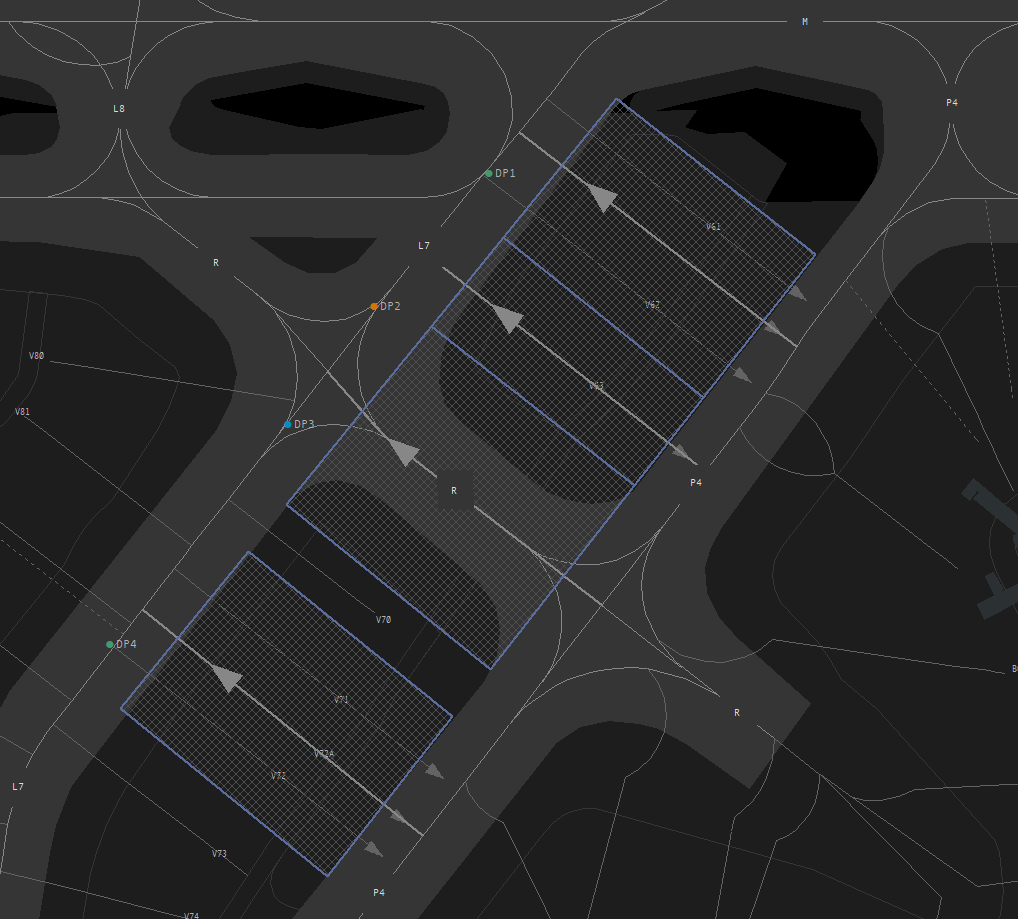EDDL - Ground
Düsseldorf Ground is responsible for all ground movements at the airport and can be split into east and west ground. If more than one ground is staffed, Delivery needs to be staffed first.
Area or Responsibility
The area of responsibility for each ground station can be seen on the image below. Each ground can only issue taxi clearances until the respective checkpoint. Any clearance beyond the checkpoints has to be coordinated. The handoff between ground stations should take place as early as possible so aircraft do not have to stop at one of the checkpoints
EWG1PM, hold short of Checkpoint 1, contact Ground on 121.605.
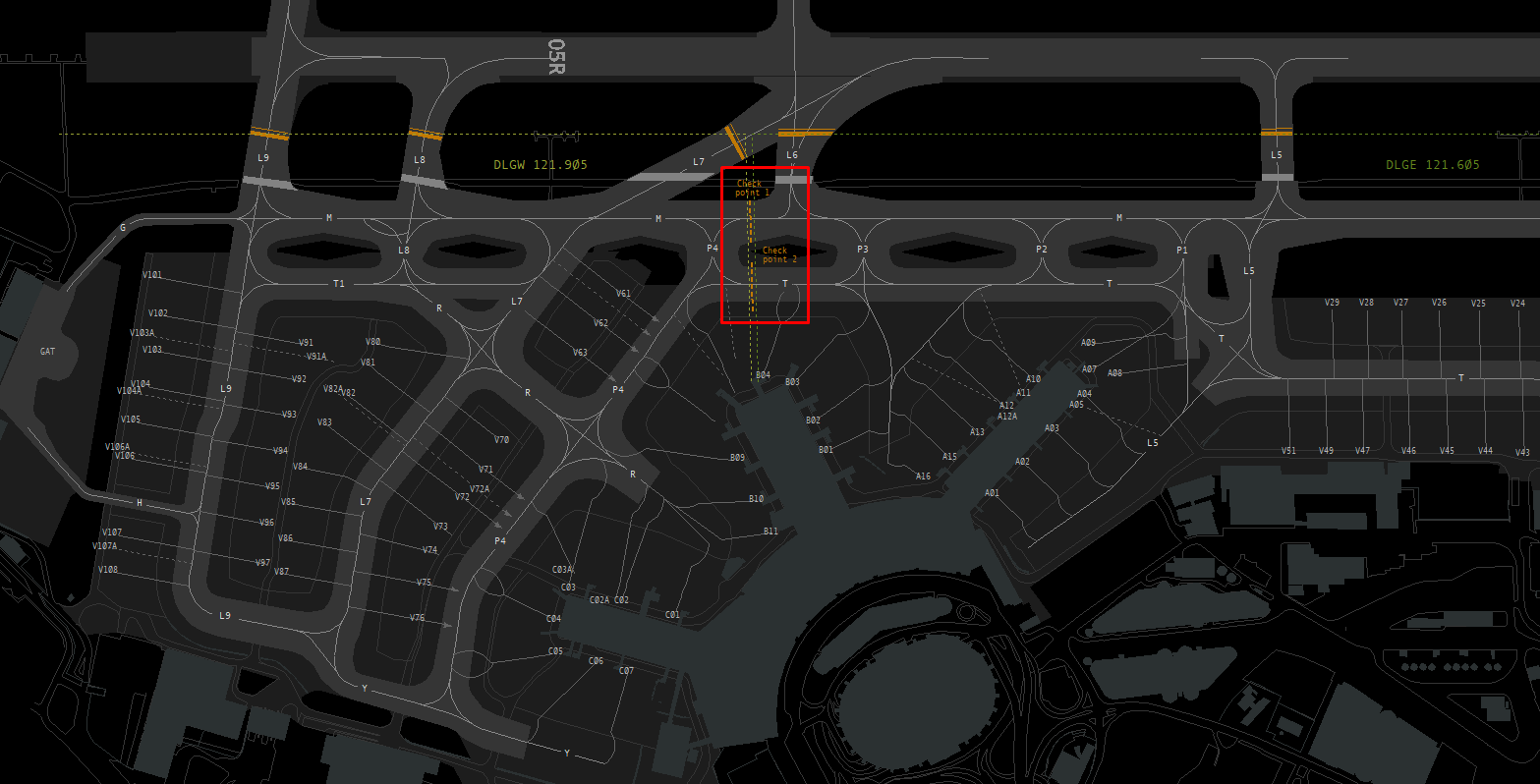 Sector Split Düsseldorf Ground West and East
Sector Split Düsseldorf Ground West and East
Parking Positions
Parking positions are assigned automatically for all inbounds according to the real life conditions by the Groundradar Plugin.
Terminal A is used by Lufthansa and Star Alliance Members for Schengen and Non-Schengen flights. Terminal B is only used for Schengen flights, while Terminal C is only used for Non-Schengen flights.
V01 should not be used as parking position.
The A380 can only use Gate C02A. Stands V08B, V11B (and V38B if all other positions are occupied) are capable for the A388, but are not included in every scenery.
Pushback
All Heavy aircraft are not allowed to push into the "terminal bays". They always have to push on taxiway T or P4.
In general only facings "north, south, west and east" are used. If traffic is instructed to push onto T or P4 this needs to be specified with the clearance: "Pushback approved, facing north, onto P4".
Only stands V61 - V72 and V75, V76 are taxi out positions. All other positions (incl. V73 and V74) require a pushback!
Example Pushback Options
1. "Pushback approved, facing north" (Some pilots may not be able for this procedure)
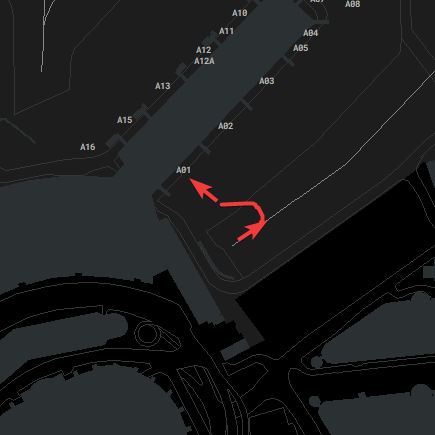
2. "Pushback approved, facing west onto T"

3. "Pushback approved, facing east onto T, between P2 and P3"
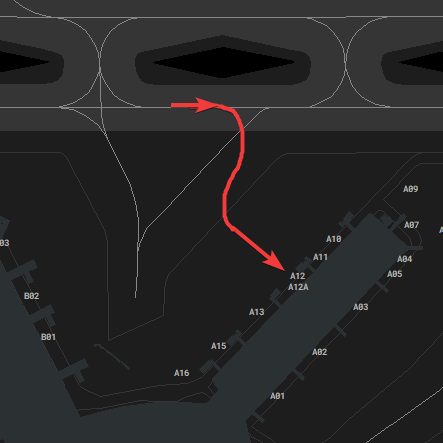
4. "Pushback approved, facing north"

5. "Pushback approved, facing east onto T, between P3 and P4"

6. "Pushback approved, facing west" (Some pilots especially from Gate C01 and B11 may not be able for this procedure)
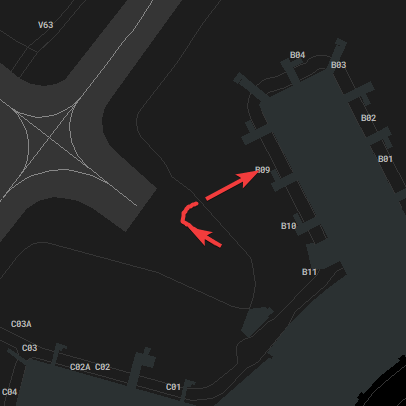
7. "Pushback approved, facing north onto P4"

8. "Pushback approved, facing north onto P4, south of R"

9. "Pushback approved facing north/south onto P4, (stay clear of R)"
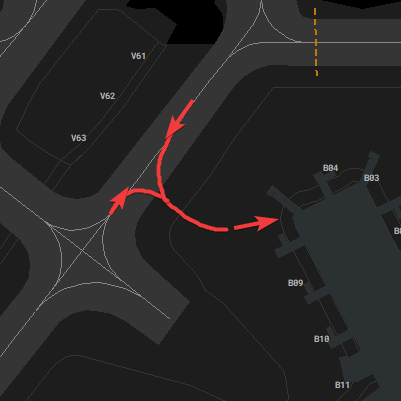
To enable an efficient traffic flow, pushback onto Y, T, P4 and R can be used instead of the "terminal bays" for all medium aircraft. This way up to 3 aircraft can push simultaneously.
GA Apron
Inbound traffic to the GA Apron always needs to enter the apron via taxiway H. Outbounds parked south of the gas station (in the middle of the apron) will exit the GA Apron via taxiway H, outbounds parking north via taxiway G. The GA Apron is limited to aircraft with a maximum wingspan of 29 m.
Taxiway Usage
Taxiway M is normally used in the direction towards the holding point of the active runway, depending on the current operating direction. Taxiways P1-P4 connect the Apron with Taxiway M.
Typical Conflicts
Apron-to-Taxiway M Intersections: The most common ground conflicts occur at the intersection points where apron taxiways (P1, P2, P3, P4, etc.) meet the main taxiway M. Special care should be taken to keep scanning the junctions for possible conflicts. One of the multiple solutions for this type of conflict can be to either use "Taxi via" and hold the traffic in front of M. Alternatively a taxi instruction with a give-way can be used just as well.
Crowded holding point during 05 Operations: Traffic approaching intersection L9 via M and via T1 have a high conflict potential when turning into the intersection. One of the multiple solutions for this problem can be to keep the junction before the holding point clear so the Tower can decide the departure sequence himself.
Use of Intersections
Ground will assign the intersections for departing traffic. The pilot always needs to be asked if able for an intersection when not using L1 or L9. This also applies to L2 and L8. Intersections a pilot is able for should be noted in the remarks. Outbounds shall be sent to Tower as soon as they are clear of any conflicts. Tower is always able to change the intersection according to the current traffic situation at the holding point and final.
If possible, Ground should sequence the outbounds on M by north/south or different SIDs when they are departungdeparting into the same direction.
L2 is only used for "faster following" or WTS if there is no prior possibility to get outbounds in the best departure sequence on taxiway M. Consider taxiway restriction for overtaking traffic on L2. When there is no benefit (e.g. one inbound between two outbounds), L2 intersection should not be used.
Only intersections with a published TORA (see charts) may be used for departures, even if the pilot reports that he would be able for a different intersection. As an exception, helicopters may depart from every part of the runway up to the runway end.
Generally, an intersection may only be assigned to a departing aircraft when the pilot either reports by himself that he is able for that intersection or agrees to it after a controller’s request - regardless of the aircraft type.
Intersections should not be used if there is no benefit for the outbound!
Taxiway Restrictions
- Taxiway P1 and L5: while one of these taxiways is occupied by a B744/B777/A350, the other one is restricted to a maximum wingspan of 60.5 m (largest possible aircraft A330/A343).
- Taxiway M and T/T1 between P1 and L9: while one of these taxiways is occupied by an A380, the other one is restricted to aircraft up to a maximum of A310/B757. Parrallel taxi is only possible for aircraft with a maximum wingspan of 65 m.
- Taxiway M and T at L3: taxiing from taxiway M onto T, and vice versa, via L3, is restricted to maximum code C aircraft.
- Taxiway L1 and L2: L2 is restricted to a maximum of code E aircraft, aswell as B777 and A346. Overtaking on L1 and L2 is only permitted for aircraft up to A330/A343
- A380: The A380 is limited to specific routings on the apron.
All relevant restrictions, aswell as the A380 taxi routings, are avaliable as a Ground Radar Map (Functions -> Map Selection -> Restrictions).
DE-ICING Areas
During 23 operations De-Icing Area East (V01 - V11B) is used and during 05 operations De-Icing Area West (V61 - V72) is used. The detailed map is available as Ground Radar Map.
| DE-ICING Area - West DP1 - max. Code E DP2 - max. Code C DP3 - max. Code F DP4 - max. Code E |
DE-ICING Area - East
DP1 - max. Code E DP2 - max. Code E DP3 - max. Code D DP4 - max. Code C V11B - max. Code F |
Arriving Traffic
Vacating RWY 05R: Traffic vacating RWY 05R via via L1, L3 or L4 (after landing or crossing) are instructed by Tower to turn right on M. The handoff to Ground will take place thereafter. This will prevent traffic to stop in the intersection and blocking the runway during frequency change.
It is not allowed to vacate/cross rwy 23L via L7 and turn left on M.

